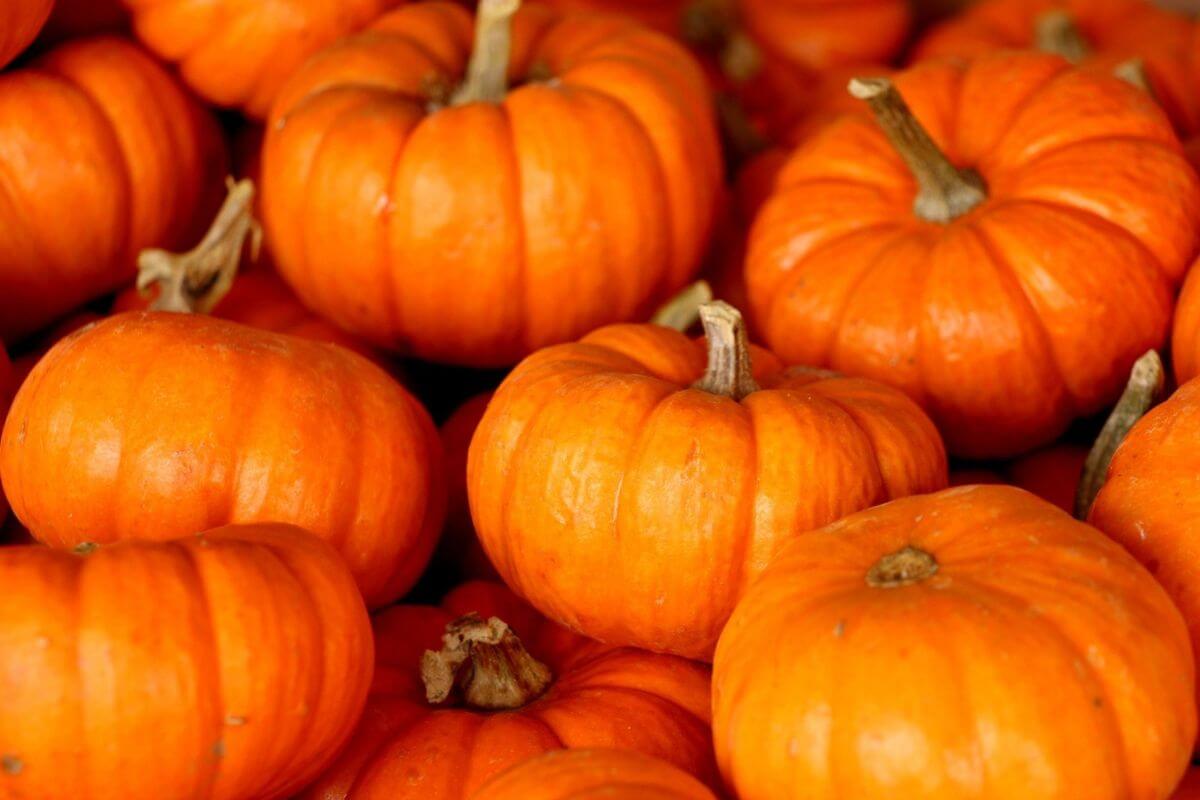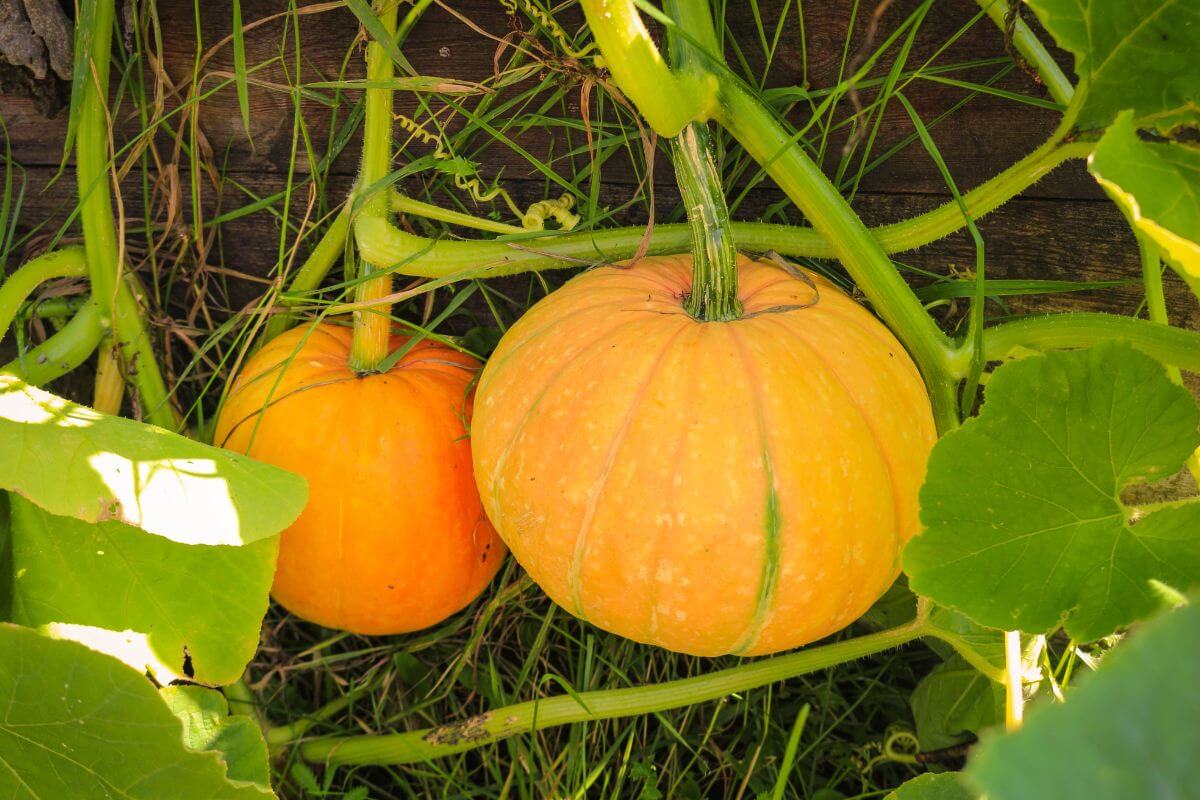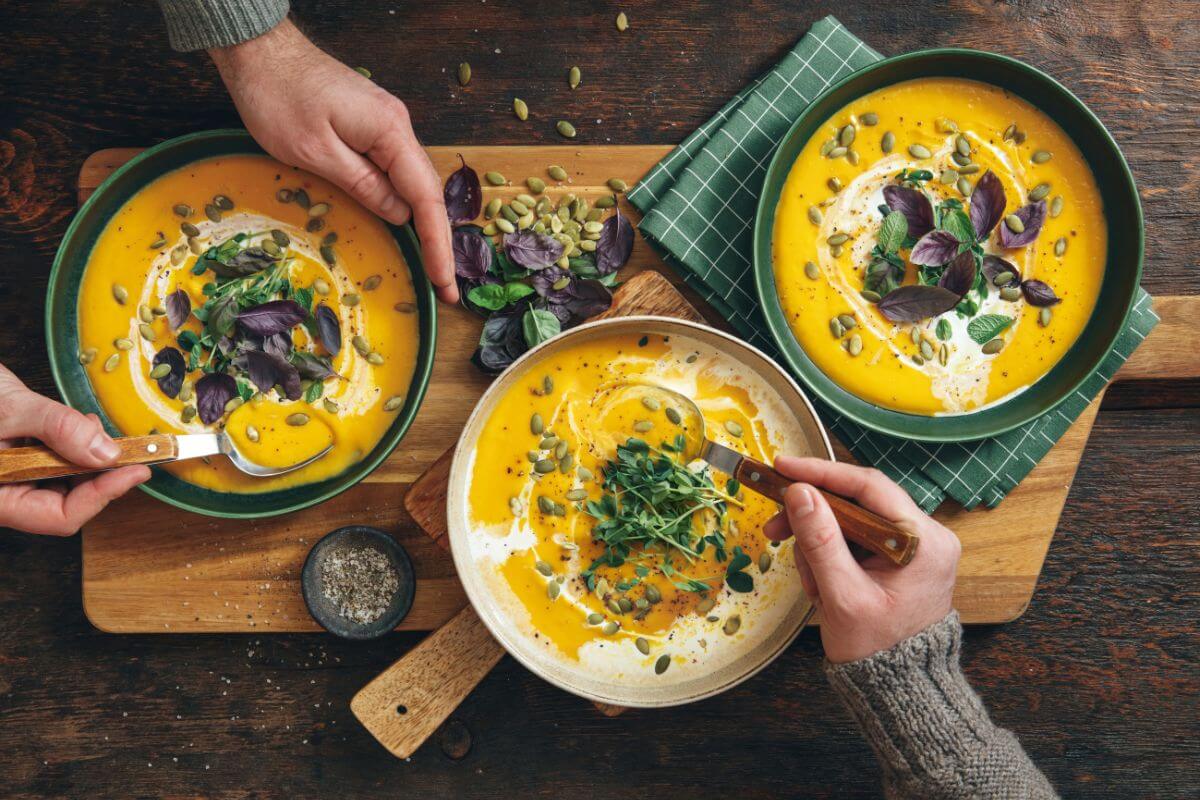The debate over whether a pumpkin is a fruit or vegetable has puzzled many. This guide will settle the score and dive into the world of pumpkins.
I’ll explore the pumpkin’s botanical classification, its culinary uses, and why it often gets mistaken for a vegetable. You’ll see how pumpkins, like tomatoes and cucumbers, blur the lines between fruit and vegetable in our kitchens. You’ll also learn about the pumpkin’s family ties to other squashes.
Ready to find out more about this fall favorite? Let’s uncover the pumpkin’s secrets and see how it fits into both our diets and our gardens.
- Related article: Fruit & Vegetable Difference
5 Key Takeaways on Is Pumpkin a Fruit or Vegetable
- Botanically, pumpkins are classified as fruits because they develop from the ovary of a flowering plant and contain seeds.
- In cooking, pumpkins are treated as vegetables due to their savory flavor and use in main dishes rather than desserts.
- The confusion arises because we often differentiate fruits and vegetables based on sweetness rather than their botanical parts.
- Pumpkins belong to the Cucurbitaceae family, alongside other fruits like zucchini and butternut squash.
- Pumpkins offer numerous health benefits, including boosting vision, immunity, heart health, and digestion, while being low in calories.
Is Pumpkin a Fruit or Vegetable?

Let’s clear up the fruit and vegetable debate surrounding the pumpkin. Yes, it’s a fruit. That may surprise you because pumpkins are often featured in some of our favorite savory dishes.
So why are pumpkins fruit, even though they’re commonly used as vegetables in cooking? Let’s break things down:
- Botanical Classification – Pumpkins develop from the ovary of a flowering plant and contain seeds, which makes them fruits in the botanical sense.
- Culinary Use – We treat pumpkins as vegetables because of their savory flavor and typical use in main dishes, not desserts.
- Why the Confusion – The mix-up comes from how we usually separate fruits and vegetables by sweetness, not by their plant parts.
This is similar to the case of tomatoes and cucumbers, considered fruits due to their botanical characteristics but used as vegetables in the kitchen.
Pumpkins belong to the winter squash group and the Cucurbitaceae family, which includes zucchini and butternut squash.
- Read more: Are Zucchinis Veggies or Fruits?
So, while an orange pumpkin is a fruit by botanical meaning, we often use it as a vegetable in cooking. This shows how the world of plants can surprise us and how our kitchen habits don’t always match up with nature’s classifications.
Pumpkins Are Berries

You might be surprised to learn that pumpkins are berries, specifically a type called pepos. What does this mean?
- Pumpkins as Pepos – This classification comes from the way botanists define berries. Pepos have a hard outer shell and lots of seeds inside, just like pumpkins do.
- Why It Matters – Knowing that pumpkins are berries helps us understand more about their growth and how they fit into the plant world.
When you carve open a pumpkin, you’ll find a stringy textured pulp filled with “pepitas” or pumpkin seeds. Technically, what we refer to as a pumpkin is, in reality, a squash and belongs to the Cucurbitaceae family, which boasts a whopping 700 varied species.
- Learn more: How to Save Pumpkin Seeds
Health Benefits of Pumpkins

Pumpkins are not just for Halloween, they’re also great for our health. Let’s look at the benefits of pumpkin and why we should include more of it in our meals:
- Nutrient-Rich and Low in Calories – First off, pumpkins are packed with nutrients but low in calories. They’re full of vitamins and minerals like vitamin A, vitamin C, potassium, and fiber. One standout nutrient is beta-carotene. Our bodies turn this into vitamin A, which is key for good eyesight and a strong immune system.
- Supports Vision – Now, about our eyes. The beta-carotene, lutein, and zeaxanthin in pumpkins are like bodyguards for our vision. They help keep our eyes healthy and protect us from problems like cataracts and age-related macular degeneration.
- Immune System Booster – When it comes to fighting off colds and infections, pumpkins have our back too. With vitamins C and E, beta-carotene, and iron, they boost our immune system, helping us stay healthy.
- Supports Heart Health – For our hearts, the potassium in pumpkins is a big help. It keeps our blood pressure in check, lowering the chances of heart disease and stroke. Plus, the fiber helps keep our cholesterol levels down.
- Cancer Prevention – Pumpkins also fight cancer. The antioxidants and carotenoids help lower the risk of cancers like prostate, lung, and breast by battling free radicals in our bodies.
- Aids in Digestion – Digestion gets a boost from pumpkins, too. They’re a great source of fiber, which keeps our digestive system running smoothly and helps prevent constipation. Eating a lot of fiber is also linked to a lower risk of colon cancer.
- Great for Weight Management – Lastly, pumpkins are excellent for weight loss. They’re low in calories but high in fiber, which means they fill you up without adding too much to your calorie count.
- Protects the Skin – The beta-carotene in pumpkins packs a lot of antioxidant power. These antioxidants will battle free radicals to combat both inflammation and skin aging. Research also indicates that beta-carotene helps to block harmful UV rays from sunlight exposure.
- Helps Improve Sleep – Rather than reaching for a sleeping aid, try eating some pumpkin seeds. They contain tryptophan, which is an amino acid that contributes to your body producing serotonin. Serotonin will improve your mood, but also promote a good night’s sleep.
In short, adding more pumpkin to your diet is a tasty way to get loads of health benefits. From keeping your eyes and heart healthy to helping with digestion and weight management, pumpkins are a powerhouse of nutrition.
Different Ways to Add Pumpkin to Your Diet

Pumpkin is not just for pies. It can boost your meals in many tasty ways. Here are some simple ideas to add pumpkin to your diet:
- Smoothies – Pumpkin smoothies are creamy and packed with nutrients. Just mix it with yogurt, milk, ice, and a pinch of cinnamon or nutmeg.
- Oatmeal – For a cozy breakfast, stir a quarter cup of pumpkin into your oatmeal. Add cinnamon, nutmeg, and a bit of maple syrup for sweetness.
- Yogurt Parfaits – Layer pumpkin with Greek yogurt, honey, and your favorite fruits or a crunchy cereal. It’s a delicious and healthy treat.
- Soups and Stews – Pumpkin puree makes soups and stews creamier. It also boosts the flavor of marinara or spaghetti sauces.
- Baked Goods – Use pumpkin in pancakes, muffins, and bread. It keeps them moist and adds a nutritional punch.
- Roasted Pumpkin – Toss fresh pumpkin cubes with olive oil and roast them. They’re a yummy side dish, especially with other roasted veggies.
- Pumpkin Seeds – Don’t throw away the seeds! Roast them with your favorite spices for a crunchy snack or a salad topper.
- Coffee – For a healthier twist on pumpkin spice lattes, mix canned pumpkin into your coffee with milk and spices.
- Granola – Make pumpkin granola by mixing pureed pumpkin with oats, nuts, and spices, then baking it until crispy.
These ideas not only make your meals more delicious but also let you enjoy the health benefits of pumpkin. It’s a win-win for your taste buds and your health.
Is Pumpkin a Fruit and Vegetable Final Thoughts
Pumpkins might look like vegetables sitting on your kitchen counter, but they’re actually fruits. This might surprise you since we often cook them like vegetables, similar to tomatoes and cucumbers. Knowing this helps clear up the mix-up between fruits and vegetables. It shows that what we call things in cooking doesn’t always match how nature sorts them.
No matter what you call them, pumpkins are great for you. They’re packed with nutrients and are super flexible in the kitchen. You can use them in all sorts of dishes, from sweet pies to hearty soups. Pumpkins bring a lot of health perks to the table, making them a must-have in your diet.
Is Pumpkin a Fruit or Vegetable FAQs
1. Is Pumpkin a Fruit in India?
In India, people call pumpkin “Halwa Kaddu” or just “Kaddu.” It is part of the Cucurbitaceae family. While you might think of pumpkin as a vegetable in cooking, it is actually a fruit in India.
2. What Class of Food Is Pumpkin?
You might not know this, but a pumpkin is actually a fruit. It’s a special kind called a pepo, which is a type of berry.
3. What Makes Pumpkin a Berry?
Pumpkins fit the botanical definition of a berry. A pumpkin grows from a single flower’s ovary. Inside, you’ll find lots of seeds in the fleshy part. The outer skin is thick and hard. These traits make pumpkins a type of pepo berry.
For more fruit or vegetable comparisons, check out these articles:


